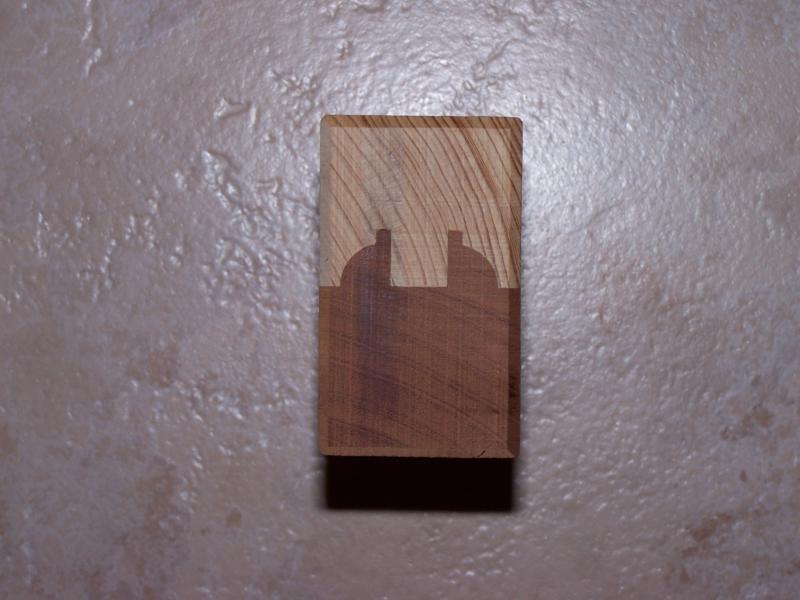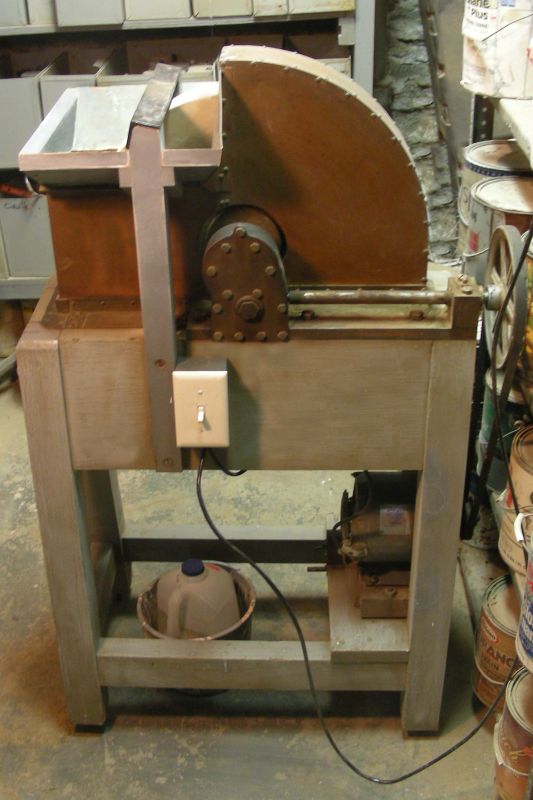Boring Machine Accuracy and Dowel Joinery
A discussion on achieving a nice joint fit when using dowels along with cope-and-stick joinery for 1-3/4"-thick door construction. May 6, 2009
Question
We just picked up a Delta Horizontal Boring machine for accurate, repeatable doweling. We're building a less inexpensive door line using dowels in lieu of MT. The issue is when assembling a stile to a rail the cope seems to be 'fighting' the dowel. Should we use a slightly smaller dowel to allow the cope to line up better, or spend another 16 man-hours attempting to get this Delta more accurate (which is another issue and topic)?
Forum Responses
(Architectural Woodworking Forum)
From contributor K:
Why aren't you using just the cope and stick cutter set? Adding dowels is just making it harder, more time consuming for you and totally unnecessary.
From contributor S:
What kind of doors are you building? Interior, exterior, kitchen cabinet, or closet?
From contributor V:
It sounds like the trouble is alignment with regards to the thickness. What can do a lot of good are "stubby" boring bits. Get the shortest available bit that will bore your hole depth. Short bits deflect less and accuracy is increased. I do agree that a good set of stick and cope cutters for cabinet doors makes a joint that does not need extra reinforcement.
From contributor O:
If your dowels are precise .2mm or .01 inch oversize is the sweet spot for the drill. Longer drills will wander when drilling pre coped parts. Depending on the profile it’s usually better to drill before coping. With shorter drills either way works. We went through a few horizontal drills before getting one that’s accurate enough for doors and all the inner mullions - rails.
From contributor E:
As long as we're talking about drill bits for dowels, another thing I found that adds to the accuracy of dowel drilling is to use a bit that's ground for end grain boring for my rails and bit that's ground for edge grain drilling for my stiles. Both W.L. Fuller and Morris Wood Tool are familiar with this as they were the ones that first informed me of this option. I do all my dowel drilling with a slot mortiser, so it's not a big deal to switch between the two different bits. Also, I agree to drill first then cope and stick.
From contributor R:
If you really want to dowel this, spend the time to get the accuracy you need. Going to a smaller dowel will mean that you have to add some system for clamping the joint until the glue dries, and means that the joint will likely be too reliant on glue filling the space rather than a true bond with wood touching wood. If you need help working out the details for this, contact me, I'd be more than happy to help out.
From the original questioner:
I should have been more descriptive. 1 3/4 exterior, true divided lite, 1/2"x3" fluted dowels, MAS Epoxy, cope and stick cutters are custom and used in our moulder and shaper.
I didn't feel comfortable relying on epoxy and the cope alone for longevity, that's where the dowels come in. I also assumed they would help with squaring and shorter clamp times (which testing showed it has).
Good points are made about bit length. Short equals accuracy as far as deflection. Our stiles are pre-cut so our short bits didn't wander. We've spent more time on the Delta which has paid off. The issue was the difference between the drill bit's point of entry and where it terminated (finished) - horizontally .0025. This was enough to skew the dowel, in turn pushing the cope out or in not giving us a square 'seat'.
From contributor D:
I would think that the potential accuracy of your machine should be adequate. The actual alignment you receive after shipping may not be correct (perhaps it was never correct). You should pay close attention to your clamping method. Equal pressure no lateral movement are the key to doweling machines. It may seem like a fool's errand to invest so many hours in setting up a machine, but you have chosen a particular process that requires high accuracy. Purchasing smaller/larger bits or dowels is not the correct choice. Either spend the time to make your existing machine accurate or buy a better machine.
From contributor M:
Most door producers do use a slightly undersized dowel, typically about 1/64". Use a good 1/2" carbide boring bit and order your dowels at the desired under dimension. We use Chicago Dowel but I am sure they are all equal. I would like to see a longer dowel 4-5".
From contributor D:
On a visit to the Morgan door factory in Wisconsin some years ago, I saw them use 5/8" spiraled dowels of 4% MC driven into 9/16" holes in the pine rails and stiles. A measured amount of glue was inserted into each bore. The doors were then clamped with a hydraulic press that would exert tremendous pressure from all sides. Those doors went together, and then came right out of the clamp and into a stack. The tight fit of the over-sized dowels worked to self-clamp the door. The cope and stick actually helped guide things together as the joints closed. I would guess they could tolerate no more than 1/64 misalignment in rail/stile surfaces. This was pine, however.
From the original questioner:
The machine was out of tune from the factory. It took a lot of head scratching to figure out what was causing the problem, the owner’s manual wasn't much help. We're using 1/2" drill bits for the 1/2" dowels. They seem to pound in pretty hard. Here's a photo of a mock up we put together for our panel doors. Dowels and coping are proving to be a good fit.

Click here for higher quality, full size image
From contributor M:
Your cope and stick look good. However once again, you will drive yourself nuts putting doors together with that tight a dowel tolerance let alone an oversized dowel. I don't know anything about a Delta dowel machine but every machine I have owned has had their quirks and even with all the tuning in the world you need a little fudge factor. If you are concerned that a slight undersized dowel will in some way decrease the strength of the joint we have tested it every way possible, and it doesn’t.
I don't know what you are using for positioning on the machine but if it is the old fashion method of marking with lines, 1/64" or .015625" is probably the width of your lead pencil. Slightly to the right or left of the mark on the length of a stile you are out your first 1/32". Now flip it over and the same 1/32" on the other side of your rail just magnified it that much more and pulling a 9-12" wide bottom rail in square will frustrate you to no end. Granted some will go together great, others you will have glue drying, dowels stuck, and cussing it the whole way.
From contributor E:
From the picture, it looks pretty good to me. I agree with contributor A that accuracy is paramount when using a slot mortiser for dowel drilling. Watch what kind of drill bits you use and all should go well. Think about using a larger dowel, or at least a longer one and you'll sleep better at night.
From contributor O:
Interesting about the end grain drills. We use ½ X 4” pins for interior doors using Morris drills. They do drill hard in end grain. I will check that out. For exterior doors we use 16mm German made drills from Guhdo. They are made a little different and drill easy in both directions.
I agree that longer dowels are needed. For interior 1 ¾ doors we use ½ X 4”. Exterior 2 ¼” or thicker doors get a single row of 16 X 150mm (about 5/8 X 6). Or in the case of 68 or 78mm thick French units a double row of 12 X 100mm. Shops using CNC routers for dowel construction normally use a shorter pin but more of them. Also agree that shops doing many doors will see the benefit of undersize dowel – or oversize bit. We glue manually using a Pizzi dowel nozzle. It takes a little practice to get the right amount in the hole. We assemble doors and frames in a hydraulic frame press; one of the big advantages of dowel construction is the quick clamp time.
Another issue is if your exterior doors are to the weather the normal beech or birch dowels will rot quickly if the joint gets any moisture. We get all our exterior dowels from Germany; they are made from locus or European oak. Rot resistant and a lot of tensile strength. They are expensive and shipping is a killer. I am running low on the quantity I bought a few years ago. If anyone is interested I am working with a vendor to bring in a quantity to save money. Just give a PM and I will pass it on .They are only available in mm but very high quality.
Even with a good tune up there are a lot of variations in horizontal drill machines and like anything the more expensive ones work better. Collet chucks and good fence systems for inside and outside indexing make doweling very accurate. We put most of our exterior doors and windows together pre sanded and never need end trimming after assembly.

